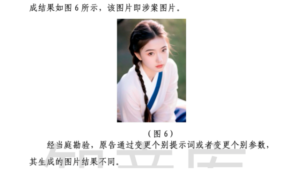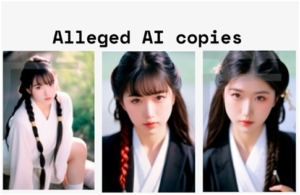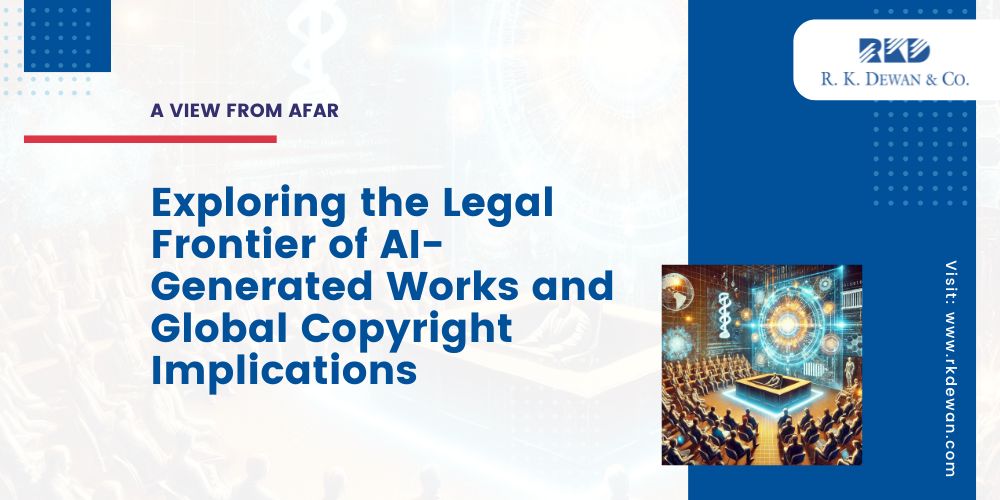Justice Manmohan Singh of the Delhi High Court has remarked in a judgment, “The world is a global village.” This sentiment captures the essence of our interconnected era, where globalization and interconnected markets continually redefine our world. Today, the judgments handed down in courtrooms across the globe can have far-reaching consequences and the ripples of these legal decisions extend far beyond their local jurisdictions, influencing economies and industries worldwide.
Welcome to “A View from Afar,” a series dedicated to examining international judgments and their far-reaching impacts. Through this series, we aim to bridge the gap between diverse legal systems and their global repercussions, offering you a panoramic view of the intricate interplay between law and commerce.
We will delve into landmark rulings from various corners of the world, unpacking the legal reasoning behind such decisions and scrutinizing their practical implications. Each article will provide a thorough analysis, shedding light on how these judgments affect not only the parties directly involved but also affect the regulatory frameworks, corporate strategies, and market dynamics on a global scale.
Whether it is a judgment delivered in any country across the world, we will share our views on its profound impact in other jurisdictions navigating through the labyrinth of international jurisprudence.
Join us in this further instalment of “A View from Afar” as we analyse theBeijing Internet Court’s decision wherein it ruled in favour of granting copyright protection to AI-generated images, marking a significant shift in the landscape of intellectual property (IP) law. This decision not only challenges the prevailing global perspective, but also sets a precedent for how AI-generated works might be protected under copyright laws in the future. In this article, we delve into the Beijing Internet Court’s nuanced analysis of “intellectual achievement” and “originality” which is likely to open new avenues for IP protection in the realm of generative AI in China, and its broad impact with respect to protection of AI-generated works as copyrights indifferent jurisdictions around the world.
The dispute arose when the plaintiff, Mr. Li, utilized the generative AI model Stable Diffusion to create an image of a Japanese idol. Mr. Li meticulously crafted specific prompts, adjusted parameters, and engaged in iterative modifications to achieve his desired outcome. He subsequently published the image, titled “Spring Breeze Brings Tenderness,” on Xiaohongshu, a popular Chinese social media platform.

*We do not claim any copyright in the above image. The same has been reproduced for academic and representational purposes only.
The defendant, a blogger named Liu, allegedly used the image without permission, removed Mr. Li’s identifying user ID and watermark, and published it on a different platform.
 *We do not claim any copyright in the above images. The same have been reproduced for academic and representational purposes only.
*We do not claim any copyright in the above images. The same have been reproduced for academic and representational purposes only.
Mr. Li initiated legal proceedings, claiming copyright infringement. This lawsuit presented a unique legal question: whether an AI-generated image, despite being created through substantial human input but not directly authored by a human, could qualify for copyright protection and be considered a “work of authorship” under Chinese law.
Before delving into the Court’s reasoning, it is essential to understand the legal foundation governing copyright in China. Under the Copyright Law of the People’s Republic of China, a work must meet certain criteria to be eligible for copyright protection:
- Originality: The work must be an original creation, reflecting the author’s independent intellectual efforts.
- Work of Authorship: Traditionally, the law recognizes natural persons, legal persons (such as corporations), or unincorporated entities as authors, but not machines or AI systems.
The Beijing Internet Court’s analysis hinged on two pivotal concepts: originality and intellectual achievement.
-
Assessing Originality in AI-Generated Works
The Court observed that originality extended beyond mere mechanical replication and required a work to embody the creator’s subjective expression and aesthetic choices. Mr. Li’s use of Stable Diffusion involved multiple layers of human input being specific intellectual contributions and aesthetic choices:
- Selection of Prompts: Mr. Li presented evidence of both, carefully curated prompts which guided the AI model’s creative process, as well as the selection of outputs. The prompt given by was:
“ultra-photorealistic: 1.3), extremely high quality highdetail RAW color photo, in locations, Japan idol, highly detailed symmetrical attractive face, angular symmetrical face, perfect skin, skin pores, dreamy black eyes, reddish-brown plaits hairs, uniform, long legs, thighhighs, soft focus, (film grain, vivid colors, Film emulation, kodak gold portra 100, 35mm, canon50 f1,2), Lens Flare, Golden Hour, HD, Cinematic, Beautiful Dynamic Lighting”
He further incorporated over 120 negative prompts to refine the image output, adjusting details like lighting, composition, and facial features.
- Iterative Modifications: After generating initial drafts, Mr. Li continuously adjusted parameters and prompts, demonstrating his aesthetic preferences and creative judgment. The iterative process reflected Mr. Li’s subjective expression, a key factor in the Court’s determination of originality.
The Court emphasized that although AI performed the technical rendering of the image, the conceptual framework, choices, and creative direction were human-driven. This distinction between the physical act of creation (done by the AI) and the creative process (directed by a human) was critical in establishing originality.
-
Intellectual Achievement
The concept of “intellectual achievement” was central to the Court’s reasoning. The Beijing Internet Court observed that Mr. Li’s inputs, designing prompts, adjusting parameters, and selecting the final image demonstrated a significant degree of intellectual investment. It concluded stating that the creative process involved was not merely a mechanical operation but an exercise of human creativity, aligning the output with traditional notions of intellectual property.By focusing on the substantial human contribution, the Court bypassed the usual technological debates about the autonomy of AI systems. Instead, it concentrated on the level of human involvement in directing the AI model. This approach mirrors the logic applied in previous cases involving computer-assisted works, where the human operator’s creative choices are deemed sufficient for establishing authorship.
This ruling is likely to influence the examination guidelines of China’s National Copyright Administration as to how AI-generated works are tobe treated during the registration process, especially in cases where human input plays a substantial role potentially leading to amendments in Chinese copyright law.
Comparative Analysis: International Perspectives of different jurisdictions
In light of this decision, it is crucial to explore how different jurisdictions, including India, perceive the copyrightability of AI-generated works. The ruling presents a significant departure from established norms, raising questions about how other countries might respond, particularly those in similar stages of technological regulation and IP law development.
-
India:
The Indian Copyright Act, 1957, mandates a work to originate from a human author to be eligible for copyright protection. The Act defines an “author” as a natural person, making no provisions for non-human creators such as AI systems. Section 2(d) of the Act specifically attributes authorship to individuals, limiting copyright protection to works that involve human creativity. For a work to be recognized under copyright law in India, it must meet the criteria of originality and authorship, both of which traditionally imply human involvement.
With the rise of AI-generated content, Indian copyright law faces the challenge of adapting to new forms of creativity where human input may be indirect or limited to setting parameters and providing prompts. Indian Courts have often looked at comparative international jurisprudence when addressing novel issues in the absence of clear statutory guidance. The Chinese ruling, focusing on the human intellectual input in the generation of AI-created content, may serve as a precedent for Indian Courts to reconsider the strict interpretation of authorship, especially in cases where human creativity plays a pivotal role in the AI’s output.
Presently, the principles of originality in India are guided by the “modicum of creativity” standard established in the case Eastern Book Company v. D.B. Modak (2008). In this case, the Hon’ble Supreme Court of India emphasized that a work must display some minimal level of creativity, setting a relatively low threshold for originality but still requiring human intellectual input.
Given this backdrop, for an AI-generated work to be protected as a copyright wouldrequire demonstrating substantial human involvement in the creative process.This is because a human is essentially the one who provides the necessary guidance to the AI system through prompts, enabling it to produce the desired output. Furthermore, it is the human who refines and improves upon the AI-generated output, ultimately inventing the final invention, including drafting of the specification.
-
USA
In the United States, the concept of originality is deeply rooted in the requirement of human authorship. The U.S. Copyright Office has consistently denied registration for AI-generated works, as seen in the cases of Thaler v. Hirshfeld and the comic book Zarya of the Dawn. The Office has maintained that copyright protection is contingent upon direct human creativity, a standard that excludes AI-generated images without substantial human alteration.
-
European Union
The European Union applies the “intellectual creation” standard, requiring that a work should reflect the author’s own intellectual creativity. The European Intellectual Property Office (EUIPO) has yet to issue definitive guidelines on AI-generated works, however early indications suggest a cautious approach similar to that of the U.S. However, the EU may eventually adopt a more flexible stance, particularly if evidence of substantial human input can be demonstrated, as seen in China’s recent ruling.
-
United Kingdom
The UK Copyright, Designs and Patents Act provides for the protection of computer-generated works, where the author is considered the person who made the necessary arrangements for the creation of the work. This provision offers a potential pathway for recognizing human input in AI-generated creations, aligning closely with the reasoning employed by the Beijing Internet Court.
-
Japan and South Korea
In Japan and South Korea, the standard for originality is high, requiring a clear demonstration of human intellectual creativity. The Japan Patent Office (JPO) and the Korean Intellectual Property Office (KIPO) have both indicated that purely AI-generated works without clear human direction do not meet the originality requirements, reflecting a stricter approach compared to China’s evolving stance.
The Beijing Internet Court’s decision represents a pivotal moment in the IP law landscape. As legal systems around the world grapple with the implications of AI in creative industries, this ruling may serve as a catalyst for change, pushing for a more nuanced approach to copyright protection in the age of artificial intelligence and could pave the way for a more inclusive and innovation-driven IP regime.


